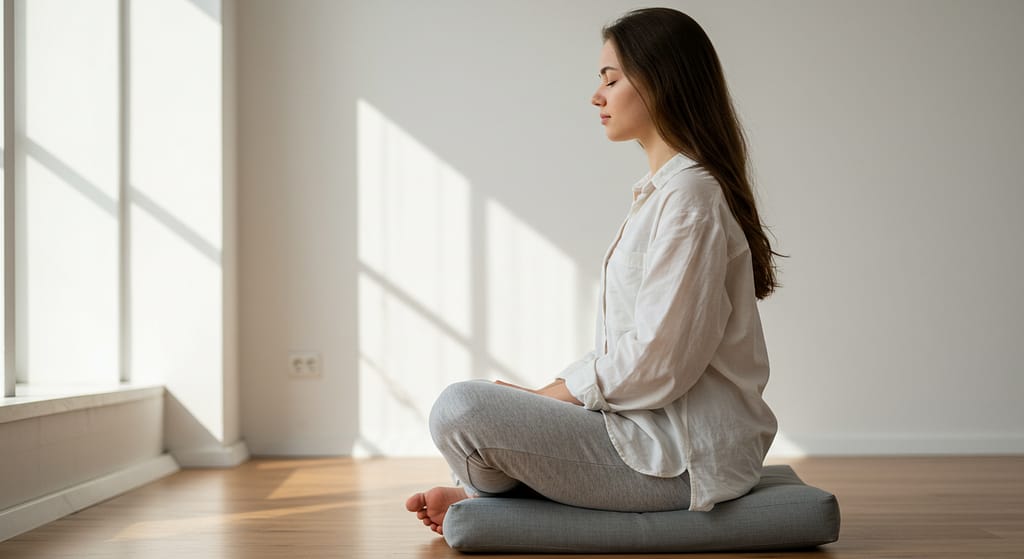Table of Contents
- The Reality of Panic Attacks and Depression
- How Panic and Depression Interact
- The Effects of Combined Panic and Depression
- What Research Is Revealing
- What Panic Attacks Feel Like
- You’re Not Alone
- How to Stop Panic Attacks Naturally
- Treatment Options for Panic Attacks and Depression
- When to Seek Help Immediately
- Final Encouragement
The Reality of Panic Attacks and Depression
Stop panic attacks—and take your mental health seriously. Panic attacks and depression affect millions worldwide, and in the United States alone, about 14 million people experience major depression, while over 3 million suffer from panic disorder. Often, these conditions overlap, creating an emotional and physical burden.

Panic attacks can mimic other health issues such as heart problems, asthma, or low blood sugar, making them frightening and difficult to identify. Awareness is crucial to breaking the cycle and regaining control. For more information on panic disorders, see Mayo Clinic’s Panic Attack Guide (DoFollow).
How Panic and Depression Interact
Depression and panic attacks are closely intertwined. Untreated depression can make panic attacks more severe, and frequent panic attacks can worsen depressive symptoms. This vicious cycle can leave sufferers feeling helpless, isolated, and trapped.
Understanding how these conditions interact is key. Internalizing emotions often worsens both conditions. Engaging in treatment early—therapy, lifestyle changes, or medication—can stop panic attacks from controlling your life.
The Effects of Combined Panic and Depression
Experiencing both panic attacks and depression simultaneously can result in:
- Emotional exhaustion: Persistent sadness, feelings of worthlessness, and hopelessness.
- Physical symptoms: Fatigue, sleep disturbances, and heightened anxiety.
- Behavioral avoidance: Steering clear of situations or locations associated with panic attacks.
- Compounded stress: Chronic anxiety amplifies depression.
This combination creates an emotionally debilitating cycle, making everyday life feel overwhelming. Recognizing these effects early increases the chances of recovery.
What Research Is Revealing
Studies increasingly show a strong correlation between panic attacks and depression. Not everyone with depression experiences panic attacks, but many individuals with panic disorders exhibit depressive symptoms.
Fortunately, treatments exist. SSRIs (Selective Serotonin Reuptake Inhibitors) are commonly prescribed to manage both conditions. Therapy and support groups are also highly effective. Learn more about research-backed approaches at National Institute of Mental Health (DoFollow).
What Panic Attacks Feel Like
A panic attack is an overwhelming surge of intense fear or discomfort that can include:
- Racing heartbeat or palpitations
- Shortness of breath or hyperventilation
- Trembling or shaking
- Chest pain or tightness
- Nausea or stomach discomfort
- Feelings of detachment or unreality
- Sense of impending doom
Many describe panic attacks as feeling like they are dying, losing control, or going insane. Understanding these sensations is a first step in learning how to stop panic attacks naturally.
You’re Not Alone
Feeling isolated is common among those struggling with panic attacks and depression. Many sufferers assume no one else understands, which intensifies fear and self-doubt.
Support is crucial. Talk to loved ones, join support groups, or consult mental health professionals. Connecting with others reduces feelings of isolation and encourages recovery.
Internal link suggestion: Check our article on Symptoms of Depression for early warning signs and coping strategies.
How to Stop Panic Attacks Naturally
While medication can help, natural strategies are effective for many. Key methods include:
1. Deep Breathing Techniques
Use 4-7-8 breathing or box breathing to calm your nervous system during a panic attack.
2. Grounding Exercises
The 5-4-3-2-1 sensory method anchors you to the present, reducing panic symptoms quickly.
3. Cognitive Behavioral Therapy (CBT)
CBT identifies and reframes negative thought patterns, reducing the intensity and frequency of panic attacks.
4. Lifestyle Changes
Balanced nutrition, regular exercise, and reduced caffeine intake support mental health and reduce panic attack risk.
5. Mindfulness and Meditation
Daily mindfulness practices improve emotional regulation and resilience. Even 10–15 minutes daily can make a significant difference.
Treatment Options for Panic Attacks and Depression
Effective treatment often combines:
- Medication: SSRIs or SNRIs reduce symptoms of both panic attacks and depression.
- Therapy: CBT, exposure therapy, and interpersonal therapy are highly effective.
- Support groups: Talking with others facing similar struggles reduces isolation and promotes recovery.
Consistency is essential. A personalized care plan from a licensed mental health professional increases success rates.
When to Seek Help Immediately
Seek help if panic attacks or depression interfere with daily life or if suicidal thoughts occur. Prompt intervention can prevent symptoms from worsening. Contact a mental health provider, counselor, or emergency services if necessary.
Final Encouragement
You do not have to suffer in silence. Panic attacks and depression are treatable. Recognizing symptoms, seeking professional help, and applying effective coping strategies can restore your sense of control.
- You are not alone
- Recovery is possible
- Support and help are available
Take the first step today—reach out, implement coping strategies, and regain control. You deserve peace, stability, and a life free from fear.
